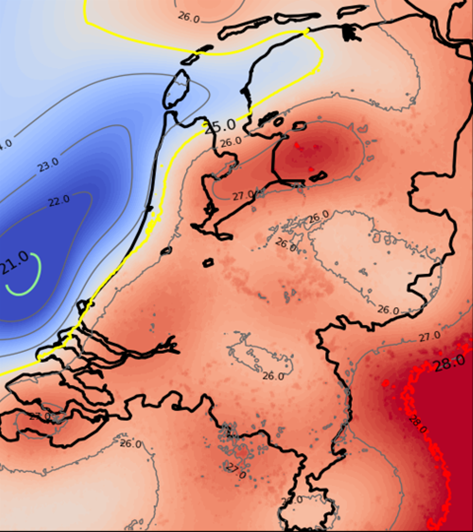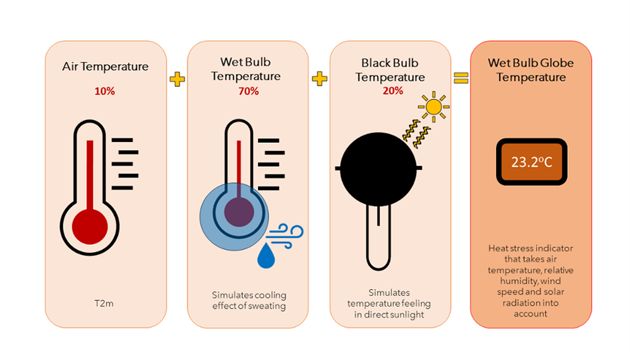Remote Sensing
Earth from Space: Pariacaca Mountain Range, Peru
3 min
As global temperatures continue to rise, extreme heat is becoming increasingly common around the world, posing significant risks to public health. A range of indicators exist to capture extreme heat, each with its own advantages and disadvantages. One of those indicators is the Wet-Bulb Globe Temperature.

As global temperatures continue to rise, extreme heat is becoming increasingly common around the world, posing significant risks to public health.
A range of indicators exist to capture extreme heat, each with its own advantages and disadvantages. One of those indicators is the Wet-Bulb Globe Temperature.
The WBGT was first developed in the 1950s to limit heat illness during military training in the US. Nowadays, it's a widely used indicator, especially to assess heat stress in strenuous activities or high-risk heat exposure, such as during the Paris Olympics in 2024. A few countries (e.g. Japan, Korea) use the WBGT to issue warnings for extreme heat.
Unlike your regular thermometer, WBGT is a combined index measuring air temperature, humidity, wind speed, and solar radiation. This combination is thought to provide an accurate representation of the environmental heat stress on the human body and 'how hot it really feels'.
Different methods can be used to calculate it, but generally, the WBGT combines three different temperatures: the dry-bulb temperature (standard air temperature, the wet-bulb temperature (cooling effect of sweating) and the black globe temperature (feeling in direct sunlight) (Figure 1).

Figure 1. Source: Modified after https://nicholasinstitute.duke.edu/
The WBGT can give a better idea of 'how hot it really feels' compared to just using air temperature. However, it also has some disadvantages.
First, the WBGT needs data on humidity, wind speed, and sunlight, which isn't always available, especially in data-scarce regions.
Next, predicting these factors can also be tricky and less reliable over longer periods. Air temperature, on the other hand, can be predicted very well up to one week in advance, making it better suited for heatwave early warning systems.
Despite these challenges, WBGT can be better at predicting heat-related illnesses, and inform a range of decisions, such as: help event organizers plan public outdoor events safety, and help establish safe working conditions and appropriate work/rest cycles, especially for outdoor labour-intensive industries such as construction.
Here's another twist: the WBGT index can be challenging to communicate effectively to the general public. First, because it's described in °C and can thus be confused with the traditionally presented air temperature.
Also, the WBGT is often lower than the air temperature, which can cause people to underestimate the risks associated with that level of heat. For those reasons it is crucial to learn how to interpret and use WBGT. Many organizations have a metric and clear action steps for different WBGT levels.

Source: National Weather Service, n.d.
So now you know: the WBGT is a vital indicator for ensuring safety and work performance in hot conditions. By considering multiple environmental factors, it offers a more detailed measure of heat stress than traditional temperature alone. By incorporating WBGT into heat safety guidelines, individuals and organizations can better protect against heat-related illnesses and maintain optimal performance in hot conditions.
At the moment, the Royal Netherlands Meteorological Institute (KNMI) is working to develop the WBGT in near-real time on a high-resolution scale (1x1 km), and as a forecast (short-term at 2.5x2.5km, medium range at 9x9km) for the Netherlands, using the citizen science network (WOW-NL) across the country.
Under another project, TNO is leading the ‘Weather Analysis and Risk Mitigation’ (WARM) project to explore how the WBGT can best be communicated both for experts and non-experts across the Netherlands, together with stakeholders from KNMI, RIVM, VU and TNO. Stay tuned!